A member of the daisy family, lettuce is an annual plant, and one of the easiest crops to grow in your garden.
Not only will you be able to grow exciting varieties that cannot be found in grocery stores, but lettuce also makes a fantastic edging and ornamental plant, adding an extra dimension of color and texture to your garden.
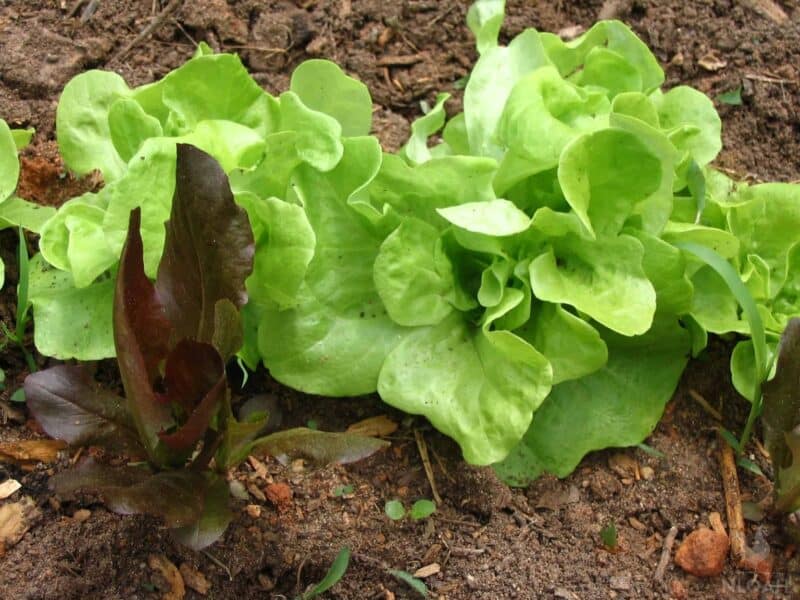
A Little Bit of History
Lettuce has been eaten for centuries, the Egyptians being the first to cultivate this crop thousands of years ago, not only for the leaves but also for the oil found within the seeds. Considered to be a sacred plant, lettuce continued to be cultivated through history. Between the 16th and 18th centuries, different varieties began to be developed.
As the crop spread throughout Europe, its medicinal qualities were discovered, and it was prescribed for a number of different ailments, from insomnia to intestinal disorders.
It was during the 19th century that lettuce made its way all over the world, reaching everywhere from North America to Asia and Australia. Today, lettuce can be found in just about anywhere, with people all over the world reaping its health benefits.
Health Benefits of Eating Lettuce
One of the most popular greens out there, lettuce brings with it some incredible health benefits:
• Anti-Inflammatory Properties – both lettuce leaves, as well as lettuce extracts, are able to lower inflammation within the body
• Protection for Neurons – neurons are cells found in the brain, and they are responsible for memory. When neurons die, memory loss occurs, and this can sometimes lead to diseases such as Alzheimer’s. However, lettuce is able to considerably control neuron health, protecting it from degenerative diseases
• Induces Sleep – lettuce was historically used as a treatment for insomnia, because it contains a depressant chemical that has effects similar to that of a sedative
• Lowers Cholesterol Levels – a regular intake of lettuce keeps cholesterol levels down, minimizing your risk of heart disease, stroke and more
• Antioxidant Properties – lettuce contains a wide range of antioxidants, which are essential for keeping the body healthy
• Reduces Anxiety – research suggests that lettuce has anxiolytic properties, meaning that it is able to control and reduce anxiety
• Aids in Weight Loss – being high in fiber but low in calories and fat, lettuce makes a great dietary addition for those trying to lose weight
Another benefit to growing your own lettuce rather than purchasing it, is that organic homegrown lettuce will be free of toxins and pesticides. Since bugs tend to love lettuce leaves, and lettuce has a high surface to weight ratio, this is a crop that often contains a high amount of toxins, and this is something that you can completely avoid by growing your own at home.
While these are all health benefits that all types of lettuces share, each variety will also have its own additional benefits. From the high protein content of Romaine lettuce to the extra antioxidants in red lettuces, it is important to spend some time taking a look at the many different varieties, as each has so much to offer.
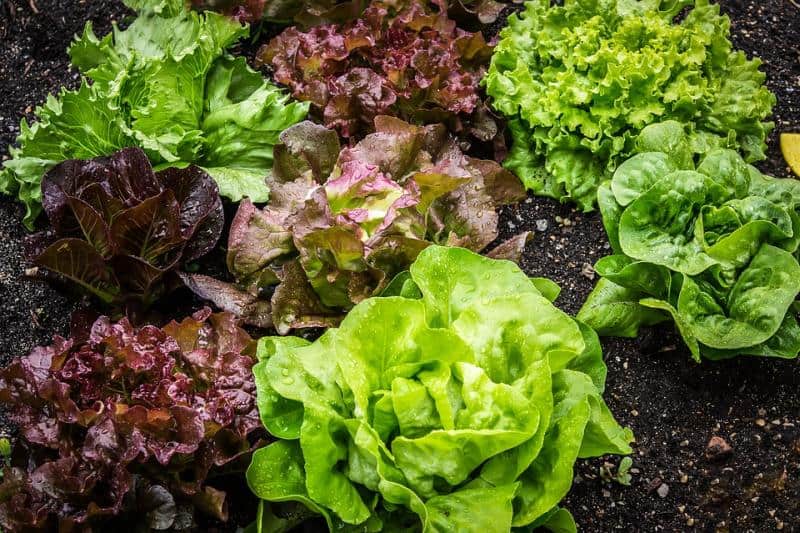
The Different Varieties of Lettuce
There are seven main types of lettuce out there, with each type consisting of dozens of different varieties.
Looseleaf Lettuces
Looseleaf lettuces tend to be fast-growing, and due to the fact that you are able to harvest just a few leaves at a time, this is a popular lettuce type grown by homesteaders. The leaves can be harvested as soon as they are large enough, meaning that you can potentially grow a salad in just five weeks.
A few varieties to consider:
• Oak Leaf Lettuce – attractively serrated leaves with a vibrant green or red color
• Delicato – dark red leaves that grow in a variety of shapes
• Mazurosso – tasty with a strong resistance to mildew
• Red Sails – slow to bolt with red-tinged green leaves
• Escarole – similar to frisee, but with broader leaves and a milder flavor
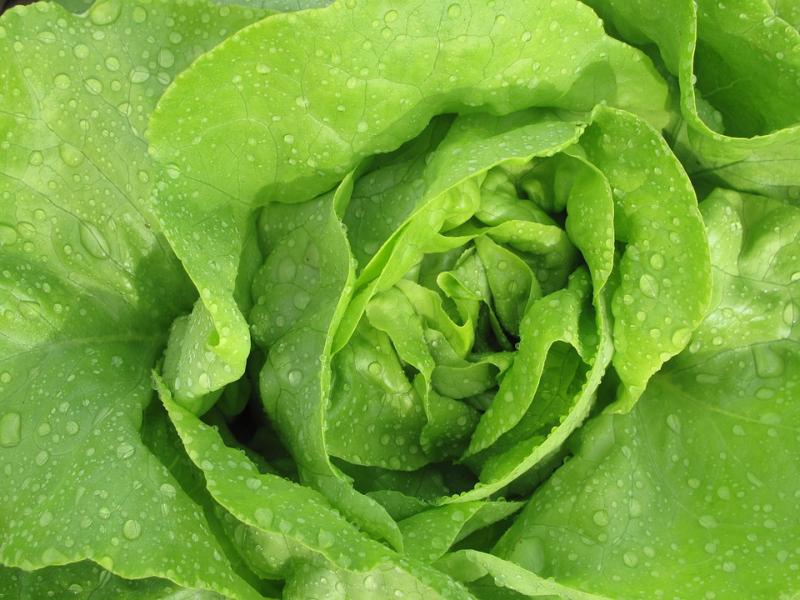
Butterhead Lettuces
Butterhead lettuces tend to have soft, sweet leaves, and are usually much more cold-hardy than other lettuce types. With its leaves forming a shape similar to that of a traditional English rose, many Butterhead lettuces make brilliant ornamental plants.
These are a few of the most popular Butterhead lettuce varieties:
• All Year Round – a classic variety that can be grown throughout the year, so long as protection is provided in the winter
• Arctic King – one of the hardiest of lettuce varieties
• Sangria – slow to bolt, with an unusual color that turns from green to a flushed red
• French Four Seasons – also known as Continuity, this is a French heirloom variety with leaves that stay tender even when they have grown quite large
• Tom Thumb ¬- forms perfect compact domes, making them great for small spaces
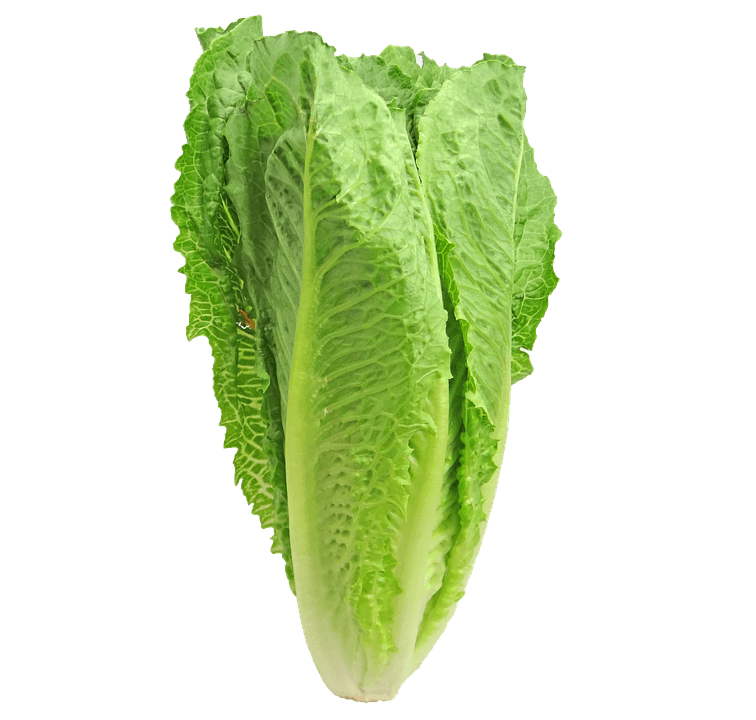
Cos/Romaine Lettuce
With an upright growth habit, Romaine lettuces tend to be more frost-resistant than other lettuce types, and can also withstand quite a bit of summer heat. Their flavor tends to be stronger than looseleaf lettuces, and they also have a crunchier texture, meaning that they can stand up to cooking better than other lettuce types.
However, keep in mind that the leaves on a single Romaine lettuce plant can vary greatly when it comes to nutrition. While the outer leaves are higher in nutrients than other lettuce types, the inner leaves do not see much sun, and are therefore not only lighter in color, but also much lower in nutrients.
Some popular varieties of Romaine lettuce include:
• Breen – a red baby Romaine that grows to just six inches high, making it great for small spaces
• Flashy Trout Back – one of the most tender of Romaine varieties, this is an Australian heirloom lettuce, featuring green leaves with red patches
• Little Gem – extremely popular due to its reliability, disease resistance and taste
• Dazzle – similar to Little Gem except with looser heads and a deep red color
• Claremont – extremely compact and grows very upright, with shiny, crunch leaves
Buttercrunch Lettuce
Buttercrunch lettuce varieties are crosses between Romaine and Butterhead varieties. They have the tender leaves like Butterhead varieties, but with the upright growing habits of Romaine lettuces, making them less susceptible to rot.
Top 2 Buttercrunch lettuce varieties:
• Winter Density – a frost-tolerant variety with thick, dark green leaves
• Buttercrunch – forms a small and open, but tightly bunched, rosette of green, fan-shaped leaves
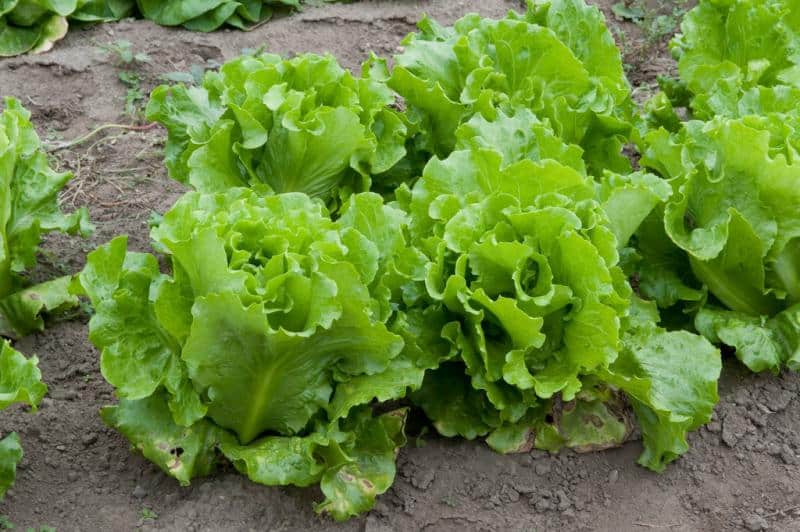
photo above: batavian lettuce. Some rights reserved by photofarmer
Batavian Lettuce
Batavian lettuce is also known as Summer Crisp lettuce, as its thick and crunchy leaves can withstand heat better than other varieties. This is a variety that starts off with loose leaves, but then forms a loose head as it continues to grow.
These are some great Batavian lettuce varieties to try growing in your garden:
• Nevada – a juicy and nutty flavor, with many claiming this variety to be the tastiest of all lettuces
• Loma – small, dense and fast-growing, with spiky green leaves
• Muir – slow to bolt with light green, wavy leaves that form small, dense heads
• Concept – crisp and succulent leaves that have the texture of a Romaine lettuce but the shape of a looseleaf lettuce
• Cherokee – thick and crunchy leaves with a deep red color
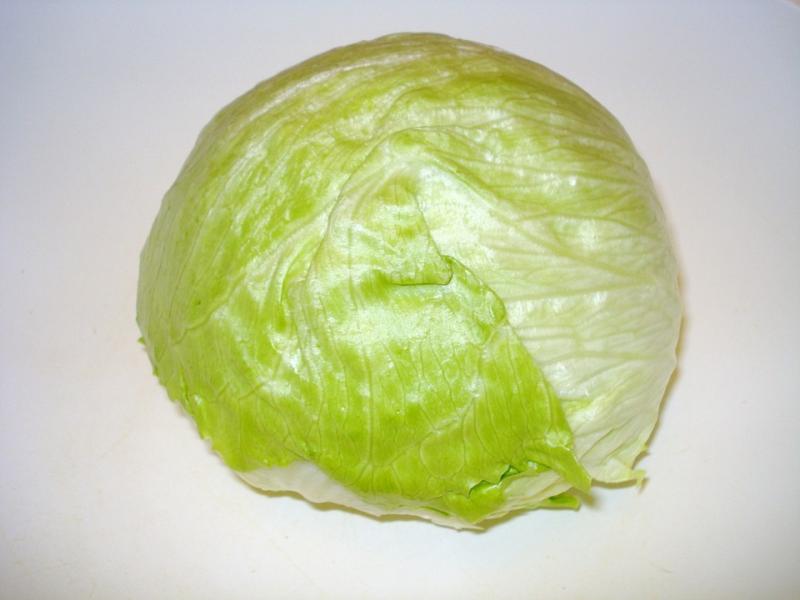
Crisphead Lettuce
While they are also known as heading lettuces, because they roll their leaves into tight heads when they are mature, you likely know this lettuce type as the Iceberg lettuce. Although commercially-grown varieties may be known for being quite bland and watery, growing them yourself organically will give you much more flavorful leaves, which are extremely disease-resistant and heat-tolerant.
These Crisphead lettuce varieties are especially popular amongst homesteaders:
• Esky – a large round frame that gives it great protection from frost
• Red Iceberg – tight heads with leaves tinged with red
• Commandment – a highly adaptable variety that is extremely heat tolerant, with dark green leaves
• Major – its head sits quite high off the ground, reducing bottom rot, while its wrapper leaves provide great protection from frost, making this a good variety for growing in the winter
• Summertime – medium green heads with dark green wrapper leaves
Chinese Lettuce
Unlike other lettuce types, which are usually grown solely for their leaves, Chinese lettuces are grown for their stalks too. Strong and robust in both flavor and texture, Chinese lettuces do have a slight bitter taste when eaten raw, but this disappears as soon as you cook with them.
Here are some good varieties to grow:
• Celtuce – the most widely available variety in the USA, celtuce has a taste similar to that of celery
• Zulu – a fast-growing variety with a large, solid head
• Yu Mai Tsai – also known as Sword Leaf or Pointed Leaf, both the leaves and stem of this variety are tender and crispy
Dwarf Lettuces
While not technically a type of lettuce, since dwarf varieties can be found from all seven types mentioned above, these are still worth a mention as they are a great option for those who do not have much growing space. Their small size also makes them useful for inter-planting with other crops, especially since many varieties will grow happily in partial shade.
A few dwarf lettuce varieties have already been listed above, but here are some other popular options:
- Rosaine – mini Little Gem-type lettuces with crisp, red leaves
- Cegolaine – slow to bolt with a resistance to mildew, this variety forms dense heads in shades of green and red
- Fenberg – thick, crispy and extremely sweet medium-green leaves
- Deer Tongue – an heirloom variety with tongue-shaped leaves
Ideal Conditions to Grow Lettuce
Lettuce is an easy crop to grow, and is usually pretty adaptable to its environment.
Although it is a cool-season crop, meaning that it does better in the spring and the fall, there are now many heat-tolerant varieties, making it easy to grow tender leaves throughout the year.
The soil you grow lettuce in needs to be loose and well-drained, but, other than that, lettuce does well in most soil types.
In the spring and fall, lettuce plants can tolerate full sun, but, in the summer months, they will do better with some shade, as this helps to prevent bolting.
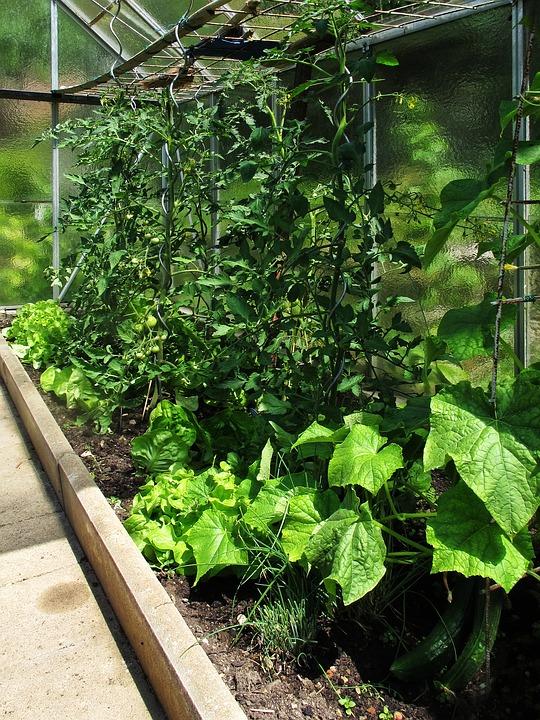
Good Companion Plants for Lettuce
Companion plants are plants that do better when grown alongside each other, either due to an improvement in flavor, yield or pest and disease resistance.
These are a few of the best companion plants to grow alongside lettuce:
• Onions, as their smell will deter rabbits from munching on lettuce leaves
• Carrots and radishes have deep roots, and will therefore not compete with lettuces for nutrients and water
• Tomatoes provide the shade that lettuce plants need in the summer
• Chives and garlic, as both will repel aphids
• Marigolds are another pest repellent
• Aromatic herbs, such as basil, oregano and thyme
Being such a shallow rooted crop, lettuces actually work well with the majority of other crops out there.
Growing Lettuce in Containers vs. the Ground
Lettuces roots are not deep at all, making them perfect for growing in containers. A shallow container is fine, but make sure that it is wide enough to allow enough room for the plants to grow.
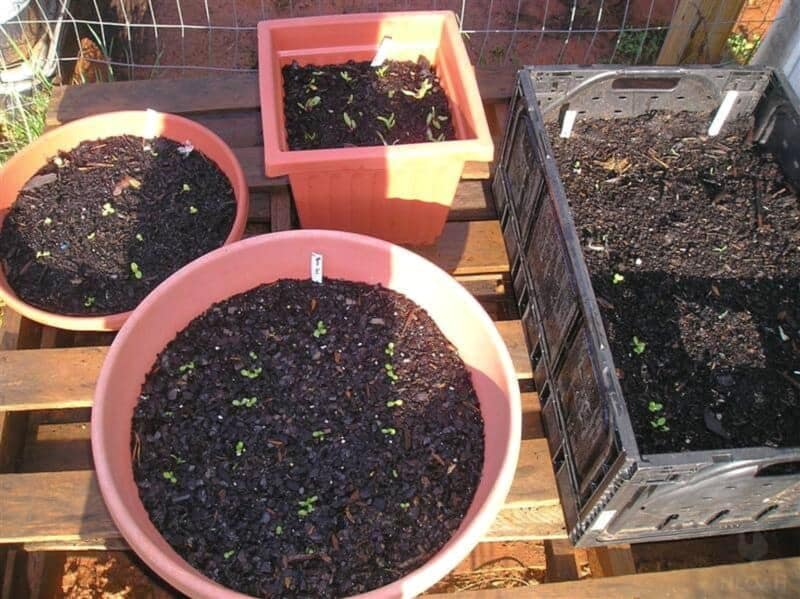
One downside to growing your lettuce in a container rather than the ground is that they may need to be watered more frequently, especially in hot temperatures.
Sowing Lettuce Seeds
Being such fast growers, lettuces are great crops for both indoor and outdoor growing. While you can purchase lettuce seedlings and plants, lettuce seeds germinate and grow so quickly, making this a crop best starting from seed.
When sowing lettuce seeds, you have two options; starting them indoors or sowing them directly outside.
If you are starting your lettuce seeds indoors, you can sow them as early as February, before planting them out under cover in March.
If you would prefer to sow your lettuce seeds directly outdoors, you will need to wait until late March before you can start. You may also prefer to do it directly where you want them to grow, rather than in rows that need to be transplanted.
Whether you are sowing your seeds in trays or in the ground, you will need to sow the seeds quite thinly, in dampened soil, around half an inch deep. Try to do this in the evening if possible, as lettuce seeds prefer cooler temperatures. The ideal soil temperature for sprouting lettuce seeds is between 55 F and 75 F (12 C and 24 C).
It takes from two days to a week for your lettuce seedlings to sprout.
Successional Sowing
Successional sowing is key if you want to ensure that you have a steady supply of lettuce from spring to fall.
This basically means that you sow your lettuce seeds in intervals, such as every fortnight, rather than all at once.
This can be done whether you are growing your lettuce indoors and outdoors, and can also be done when starting lettuce off in trays.
Thinning Lettuce Seedlings
Lettuce seeds are tiny, and even if you took great care to sow them as thinly as possible, you will still likely need to thin out your seedlings a bit. For those who sowed their seeds quite thickly, thinning will definitely be essential.
When you have too many seedlings growing in a space together, they have to compete for nutrients, light and water, meaning that they will not grow as well. Thinning them out allows the remaining plants to really thrive, and also improves air circulation, therefore reducing the chances of your plants developing a disease.
A common method of thinning is to pull up extra seedlings from the base, including their root. However, this can actually disturb the roots of the other seedlings around it, hindering their growth.
A safer way to thin is by using a pair of scissors to snip excess seedlings at their base, and then removing them from ground level, leaving the roots in the soil.
Don’t worry about thinning them all at once. It is fine to do this gradually in stages as the plants grow, as this will give you a better idea of which ones need to be removed. Just make sure that the leaves of adjacent plants are never overlapping.
If you have sown your lettuce seeds directly outside, continue the thinning process until each seedling has its recommended amount of space around it.
Make sure that you do not throw away your thinned lettuce seedlings. These nutritious microgreens make great additions to salads, or can be used as a garnish on just about any dish.
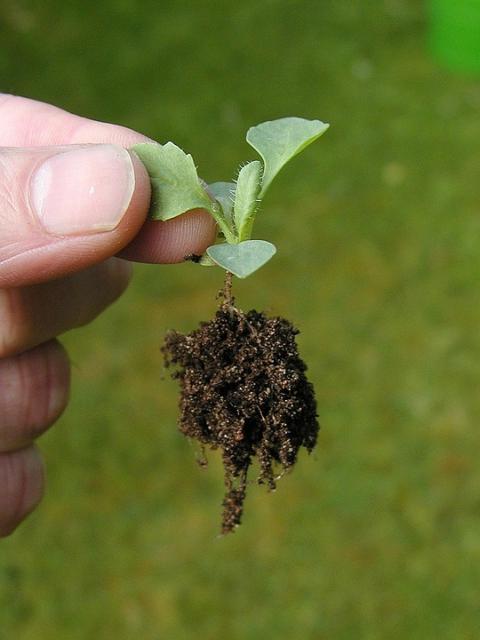
Planting Out Lettuce That Has Been Sown Indoors
If you have sown your lettuce in trays indoors, then you will need to plant them outside when they are around three weeks old.
However, before you can do so, you will need to harden them off. All this consists of is moving your seedlings outside during the day, beginning about three to four days before you intend on planting them outside. This will give them time to adapt to their new environment, resulting in less stress for each plant when you actually come to transplant them.
Once you have done this, you can then plant them out. All you need to do is dig a hole in the place that you want them to go, making sure that the hole is as deep as the rootball of each plant, and twice as wide. Gently place the plant into the hole, so that the crown of the plant is at soil level.
Then, firm the soil around it and water it well, as this helps to settle the soil and get rid of any air pockets.
One important factor to consider when planting your lettuces out is spacing. As you can see from the many different lettuce varieties listed above, the amount of space that your lettuce plants need will depend on the varieties that you have chosen to grow.
However, here are some guidelines that you can start with:
• Looseleaf lettuce varieties – 4 inches apart
• Cos and loose-headed varieties – 8 inches apart
• Firm-headed varieties – 16 inches apart
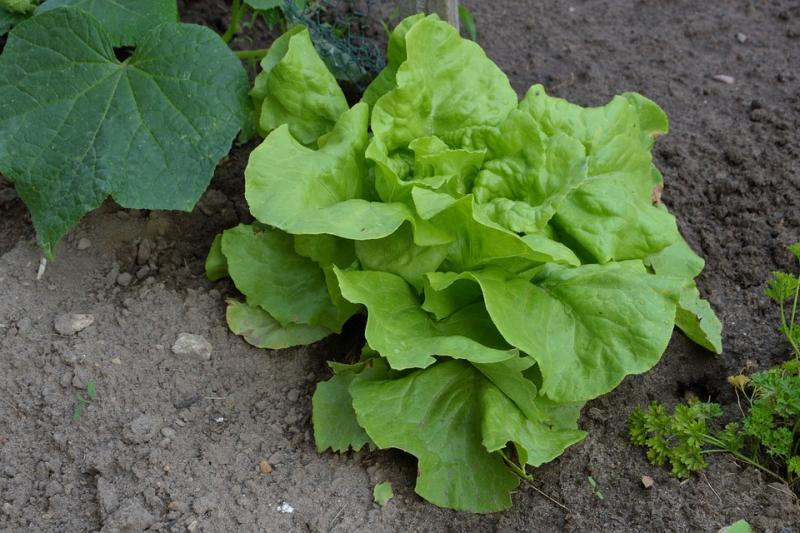
Growing Your Lettuce
Just like all of the other vegetables you grow, your lettuce plants will need to be watered regularly. This will need to be done once a day, or even twice a day if the weather has been particularly hot, or if your lettuce is growing in a container rather than the ground.
The reason for this is due to the shallow roots that lettuce has, meaning that the top few inches of soil needs to be consistently moist.
While lettuce does not necessarily require any extra feeding, especially if you have amended the soil before planting, it could always benefit from a boost of nitrogen.
In warmer temperatures, use a slower-release fertilizer, going for a soil amendment such as alfalfa. However, in colder temperatures, your lettuces could do with a fast-releasing nitrogen fertilizer, such as composted chicken manure or worm castings.
Supplementing your plants with calcium could also help, especially if your soil is quite sandy.
One problem that many people have with their lettuce plants is early bolting. Bolting is inevitable, and is something that all lettuce plants will do.
This basically consists of the plant sending up a flower stalk, which then produces flowers and seeds.
Lettuce plants bolt for two main reasons:
• Not enough water
• Excessively hot and dry weather
Since lettuce leaves turn bitter once the plant begins to bolt, this is something that you will want to delay for as long as possible, in order to extend the lifespan of your plants.
Here are a few tips to help you to prevent your lettuce plants from bolting:
• Choose heat-tolerant varieties if you know you experience hot summers
• Add a layer of mulch around your lettuce plants, as these will hold in more moisture while keeping the soil cooler
• Set up an automatic watering system if you know that you frequently forget to water your plants
• Every garden will have its own microclimates, so plant your lettuce in the coolest areas of your garden
• Inter-plant lettuce with other crops that can provide shade, and therefore keep the plants cool
To mulch your lettuce plants, simply add a layer of organic material around each plant, making sure that this is around two to three inches thick.
This can be anything from straw to wood chips to leaves, but just make sure that you leave a little space directly around each plant, as this will help to prevent rot.
If your lettuces do start to bolt, do not panic. If you have caught them in the early stages of bolting, you can actually use the flower stalks in stir fries and many other dishes. Alternatively, you can wait for seeds to form, and then save them for your next growing season.
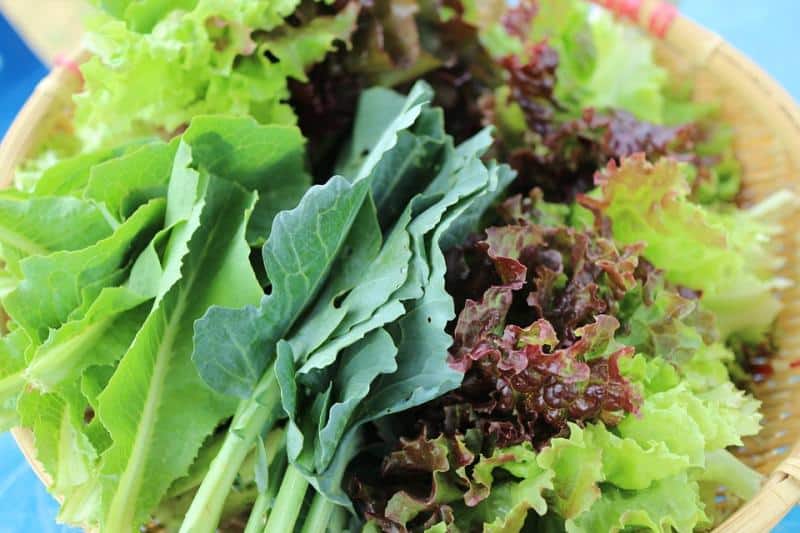
How to Harvest Lettuce
No matter which variety you may be harvesting, the best time to do it is early in the morning, as their leaves will have plumped up overnight, making them especially juicy.
Other than Crisphead varieties (with which you need to wait for to mature), every other type of lettuce can be harvested as soon as the outer leaves are large enough to eat. If you are growing a variety that is going to be forming a loose head, make sure that you do not touch the center of the plant, because it will still form a head, even if you’re regularly harvesting its outer leaves.
To harvest lettuce leaves, either gently pull off the ones you want to consume, or use a pair of scissors.
To harvest whole lettuce plants, use a knife or a pair of scissors to cut them about an inch up from the ground. If you continue to water the remains of the plant, many varieties will still provide a second cutting in just a couple of weeks.
How to Wash and Store Lettuce
Soon after harvesting your lettuce leaves, place them into a large bowl of water, so that any aphids, or other bugs, that are clinging to the leaves will either float to the surface or sink to the bottom of the bowl. Then, give the leaves a quick rinse.
The easiest way to dry lettuce leaves is with a salad spinner, and you do now get many spinners that wash your leaves for you too.
Lettuce leaves are best eaten fresh, but, if you do need to store them, place them in an air-tight bag, along with a strip of paper towel, and make sure that you remove any excess air from the bag before sealing it. Place this in your fridge, and it should keep for a couple of weeks. While commercially grown lettuces may begin to rot much sooner than this, many homegrown varieties can actually store in the fridge quite well.
Leaving Your Lettuce to Go to Seed
Being able to collect lettuce seeds tends to be the main reason many homesteaders leave their lettuce plants in to go to seed, but there are a few other benefits to doing this as well:
• Prevents soil erosion – even though lettuce plants have shallow roots, these roots still help to reduce the amount of soil erosion you experience. By leaving your plants in the ground, the roots continue to hold on to the soil structure, preventing precious soil from being washed away
• Self-seeding – if you do not collect the seeds that a lettuce plant produces, the plant will end up sowing these seeds itself. This will tend to happen around the plant, as the majority of the seeds will just drop, but the wind will also help to spread the lettuce seeds around your garden, giving you lettuce plants next season with no effort at all on your part
• More to compost – lettuce plants can send up flower stems that can reach up to four feet in height. All of this extra plant material is great for your compost bin, adding in more mass, as well as aeration
Saving Lettuce Seeds
When saving seeds from a plant, you want to make sure that you are choosing the best possible specimens to save seeds from. When it comes to lettuce, this means choosing the plants that are the largest, tastiest, and slowest to bolt.
Lettuces do not cross pollinate, meaning that even if you are growing multiple varieties side by side, the seeds that each plant produces will still produce plants identical to its parent plant.
Once you have chosen which lettuce plants you are going to be saving seed from, you need to keep a close eye on them as their flower stems continue to grow. These can often become quite heavy but thin at the top, and could either fall over or snap.
To prevent this from happening, you may need to stake your lettuce plants as they mature, especially if they are often subjected to strong winds.
As the seed heads begin to mature, they will turn much darker in color, and you will be able to see them drying out. While it may be tempting to leave the heads on the plant until they are fully dry, lettuce seeds are tiny, and a strong wind could mean that you quickly lose all of the seeds you were hoping to save.
To prevent this from happening, try to pick the heads before they fully dry out, but when the seeds have matured, meaning that they are no longer a green color. Simply cut the stem just below the base of the seed head, and then place this into a paper bag.
Hang this bag in a cool and dry place for a couple of weeks, so that the seeds can complete their drying process.
Once the seeds are fully dried, place the stalks that you have cut, along with their seed heads, into a large bowl. Use your hands to crush the seed heads, picking out any large pieces of debris as you go along.
Soon, you will be left with a bowl full of lettuce seeds and small pieces of dried plant material. At this point, you should be able to winnow the seeds. This means swirling the bowl in a circular motion, allowing the heavier seeds to sink to the bottom. Tilt the bowl at an angle and blow over the top, so that the lighter pieces of plant debris are blown out of the bowl.
You will need to repeat this process at least five or six times, until you are left with a bowl that is around 95% seeds. While you can then use a fine sieve to filter the rest of the plant dust out, this is not really necessary, and is a step that can be skipped.
Once you have your lettuce seeds, store them in an air-tight container for up to five years. Make sure you label them well, including their variety as well as the date you harvested them.
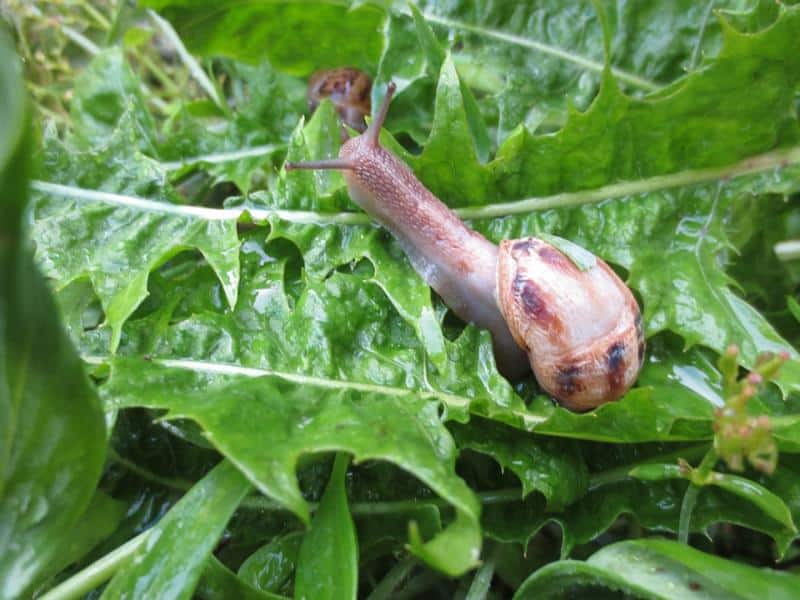
Pests and Diseases
While lettuce may be quite an easy crop to grow, there are a number of pests and diseases that will make the task slightly trickier.
Problems begin with lettuce seedlings, as these are so attractive to everything from birds to rabbits to squirrels. While bird nets may be your first point-of-call, rabbits and rodents will just chew through these, making floating row covers a better option.
Snails and slugs are also common pests, and they not only eat lettuce leaves, but also love to live in the cool and moist environment that the leaves create.
Another pest to watch out for are aphids, and while these will rarely be fatal to your lettuce plants, they do make the leaves so much harder to clean when it comes time to harvest them, and you will find yourself having to pick the bugs off one by one.
When it comes to diseases, lettuces are generally quite hardy, so long as they are grown in good conditions and are not overcrowded. Nevertheless, here are a few common diseases that you will want to keep an eye out for:
• Fungal diseases, such as mold, which can be prevented by good spacing to improve airflow
• Bottom rot occurs during warm and wet conditions
• Downy mildew means that any affected leaves will need to immediately be removed and burned
Creative Ways to Use Lettuce in the Kitchen
Lettuces are most commonly used in salads, and there are hundreds, if not thousands, of different ways to make it.
However, lettuce is so much more than this, and can actually form the base of some very substantial meals. Here are a few ideas to inspire you:
• Lettuce wraps, filled with everything from crispy shredded roast duck to succulent pulled pork
• Lettuce soup is sweet, nutritious and so easy to make
• Lettuce is packed with water, so add some leaves to your next juice or smoothie
• Crisp lettuce varieties can be seared or grilled, bringing out intense flavors
• Topped with chicken, tuna or a dip, just like a cracker
• Substitute some basil for lettuce in your next pesto
• Dehydrated and crushed into a green powder, which will give any dish a nutritional boost
If you have any Chinese lettuce, then you have even more culinary options available to you. The leaves themselves can be used in the same way as other lettuce leaves, but they can also be cooked. Try steaming or stir-frying them, or shredding them and using them as a replacement in recipes that call for collards or chard.
The stems are delicious when cooked, and can be cooked in the same way as the leaves. The only difference is that they will need a longer cooking time, so add them to a dish a few minutes before you add the leaves.
There are many different types of lettuce to grow, and endless ways in which you can grow them. This is a plant that just about every homesteader will have in their garden, so, whether you are growing an unusual variety or

Alina was a born and bred city girl, until she moved to the Scottish countryside in 2013 to live the self-sufficient life. Thrown in at the deep end, she spent all her time learning as much about homesteading as she could, putting theory into practice each and every day. T
oday, Alina grows large amounts of food in her garden, greenhouse and polytunnel, and also has a number of different animals that call her little farm “home”.

thanks for the good data the owner of the site is a lovely lady a shame your married and I am so dam old !!!
Grampa